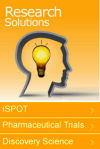 In my last post, I tried to synopsize the first two of Brain Resource‘s products – brain training and clinician support tools built from web-based instruments. Now its time to move up several notches to their third product[s] which they gather under the heading research solutions. In this instance, we’ll have to move beyond the confines of their Brain Resource web site which only outlines their iSPOT, Pharmaceutical Trials, and Discovery Science product offerings [some of which are works in progress] – moving to journal articles and clinical trials to flesh out the details.
In my last post, I tried to synopsize the first two of Brain Resource‘s products – brain training and clinician support tools built from web-based instruments. Now its time to move up several notches to their third product[s] which they gather under the heading research solutions. In this instance, we’ll have to move beyond the confines of their Brain Resource web site which only outlines their iSPOT, Pharmaceutical Trials, and Discovery Science product offerings [some of which are works in progress] – moving to journal articles and clinical trials to flesh out the details. In this case, the research is on the part of Brain Resource themselves. They’ve initiated two large clinical trials whose aim is to discover biomarkers that will predict treatment response by casting a very wide net – adding brain imaging, genetic testing, electrophysiological testing, and some of the more traditional rating scales to their own proprietary brand of assessment. The link to Personalized Medicine is that they hope to predict medication choices by advance screening. I mentioned this enterprise earlier [poking holes…], but I wasn’t really up to speed so I’m going to begin by repeating what I showed earlier from their web site:
In this case, the research is on the part of Brain Resource themselves. They’ve initiated two large clinical trials whose aim is to discover biomarkers that will predict treatment response by casting a very wide net – adding brain imaging, genetic testing, electrophysiological testing, and some of the more traditional rating scales to their own proprietary brand of assessment. The link to Personalized Medicine is that they hope to predict medication choices by advance screening. I mentioned this enterprise earlier [poking holes…], but I wasn’t really up to speed so I’m going to begin by repeating what I showed earlier from their web site:
|
International Study to Predict Optimized Treatment Response (iSPOT) – in depression and ADHD
iSPOT is the largest current Personalized Medicine research study in mental health with the potential to change the way we treat depression and ADHD. At present there is no way to objectively select the correct antidepressant medication to be prescribed in the first instance. Using all the methodology in the picture below, in a standardized manner, iSPOT is assessing which brain and body markers can predict the right medication for the right person at the right time. This will help to personalize treatment in depression and ADHD. Translational – clinicians will have less trial and error and more objectivity in selecting the right treatment.
|
by Williams LM, Rush AJ, Koslow SH, Wisniewski SR, Cooper NJ, Nemeroff CB, Schatzberg AF, Gordon E.
Trials. 2011 Jan 5;12:4.
 Brain Resource, besides running its own clinical trials [iSPOT-A and iSPOT-D] has developed some instruments for use in drug trials by others.
Brain Resource, besides running its own clinical trials [iSPOT-A and iSPOT-D] has developed some instruments for use in drug trials by others.
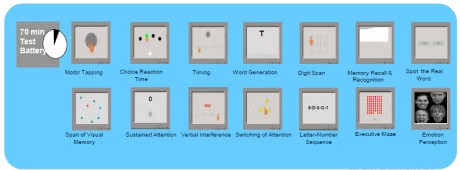
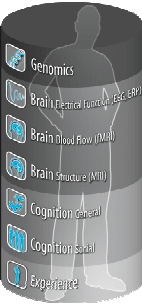 Integrative Platform for New Drug Discovery: This is the big one and explains the reason for their expansive database.
Integrative Platform for New Drug Discovery: This is the big one and explains the reason for their expansive database.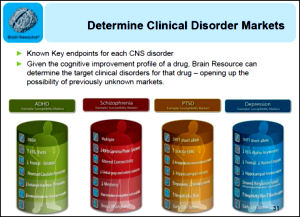
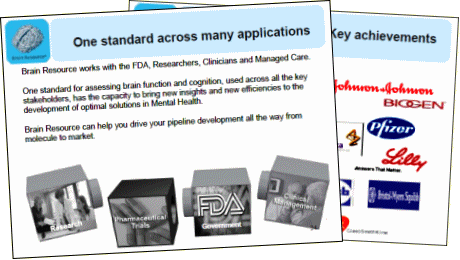
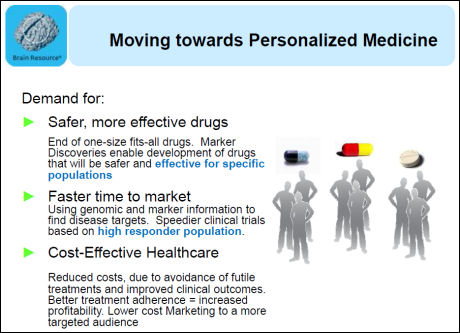
 There is another research product they call the Discovery Science option with which the offer their proprietary instruments to non-grant supported and non-profit organizations at "greatly" reduced rates. I’ve digested the information from this option because the pdf’s included in their write-up offer you the best opportunity to look at the various products one at a time – particularly the non-questionnaire options [LabNeuro, MRI-Neuro, and Molecular-Neuro]. Unless I missed something along the way, I think this is the finale – the last of the Brain Resource products.
There is another research product they call the Discovery Science option with which the offer their proprietary instruments to non-grant supported and non-profit organizations at "greatly" reduced rates. I’ve digested the information from this option because the pdf’s included in their write-up offer you the best opportunity to look at the various products one at a time – particularly the non-questionnaire options [LabNeuro, MRI-Neuro, and Molecular-Neuro]. Unless I missed something along the way, I think this is the finale – the last of the Brain Resource products.
|
The Discovery Science offering grants independent researchers special access to the Brain Resource methodology at greatly reduced rates: Researchers performing academic research aimed at scientific publication and Independent, not for profit Researchers. Services include: access to standardized Brain Resource testing software; rapid scoring of data; and delivery of datasets in comma-delimited format at 3 monthly intervals.
• Screening Questionnaires [PDF 100kb]:
BRISC: web-based questionnaire assessment of emotional cognition.
WebQ: set of 22 web-based demographics questionnaires.
WebNeuro [PDF 266kb] : web-based assessments of general and emotional cognition.
IntegNeuro [PDF 254kb]: automated touchscreen neuropsychological tests.
• Brain-Body Functions [PDF 104kb]:
LabNeuro [PDF 259kb]: lab-based assessment including psychophysiology [EEG, ERPs, autonomic measures and neuropsychological test batteries].
• MRI, fMRI and DTI [PDF 102kb]:
MRI-Neuro: structural and functional MRI
• Genetics [PDF 118kb]:
Molecular-Neuro: collection via cheek swab or saliva method [and in some cases bloods] of DNA for extraction of SNPs and other variants of interest.
BRAINnet is an independent foundation set up to provide free access to data in the International Database that Brain Resource has permission to share for the purposes of collaborative research. As a member of BRAINnet, an independent researcher may apply for access to normative data. It is comparable data because it has been collected and scored in exactly the same way as your own Discovery project.
|
Yet another note from the ghost in the machine: It’s me again. In-so-far as I am capable, this summary of Brain Resource is accurate. I told you it was going to pick up steam. I’ve changed some of the graphics to fit your screen [like they do in the movies] and I’ve condensed some of their descriptions. If any meanings got changed in the process, I apologize. That was not my intent. So now I’m going to stop being a ghost and come back as my regular old self…
Here is a real gem. It is Charles Nemeroff’s institutional affiliation statement in the published paper describing the iSPOT-D trial. See here Trials. 2011; 12: 4.
Has a similar statement ever been published in a scientific journal before?
CBN is Leonard M. Miller Professor and Chairman of the Department of Psychiatry and Behavioral Sciences, University of Miami. Before this, he built the Department of Psychiatry at Emory University School of Medicine in Atlanta into one of the top ten departments in the United States, as Reunette W. Harris Professor and Chairman of the Department of Psychiatry and Behavioral Sciences.
It is what it is and it speaks for itself. Comment would be superfluous.
Jeez how come the statement left out that he was defrocked as Chairman at Emory and almost prosecuted by Grassley?